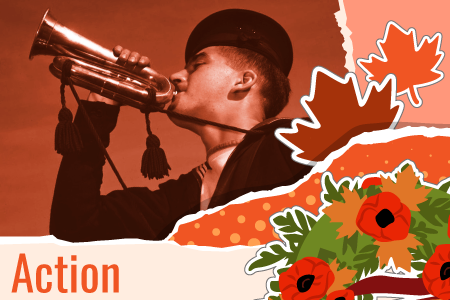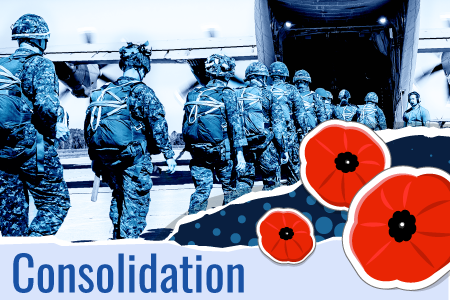Learning goals
We are learning to:
- develop an understanding of the history of Remembrance Day
- provide examples of Canadian Armed Forces members who showed bravery
- reflect on the importance of Remembrance Day as a National Day of Observance
Remembrance Day
Every year on November 11, Canadians observe a holiday called Remembrance Day.
Explore this!
Check out the following video by the Canadian Armed Forces called “The Importance of Remembrance”. As you are exploring, consider the following questions:
- Why do we observe Remembrance Day?
- Who do we honour on Remembrance Day?
Bravery
“Remembrance Day is a time to say thank you.”
– “The Importance of Remembrance”, Canadian Armed ForcesOn Remembrance Day, we thank veterans and current members of the Canadian Armed Forces. One of the things we thank them for is their bravery. Let’s now reflect on the word “bravery”.
Pause and reflect

Consider the following question and record your response using a method of your choice.
- What does the word “bravery” mean to me?
What does it mean to be brave?
Bravery can come in actions that are big and small. Some examples of bravery are:
- the actions of the Canadian Armed Forces to protect our country
- standing up for a friend
- admitting a mistake
Journal
Think about another example of a brave action, big or small. The example can be about you, a person in your life, a character from a book, movie, or other media source of your choice.

You may consider the following questions:
- What challenge did they face?
- How did they show bravery?
Record your example in a method of your choice. You may use the Journal to record your example.
As described in the “Minds On” section, Remembrance Day honours the Canadian Armed Forces. Let’s now explore a timeline of major historical events and Canada’s history of honouring veterans.
A timeline of major historical events
The following timeline provides a snapshot of major historical dates and events presented in this learning activity.

The history of Remembrance Day
Before November 11 officially became Remembrance Day, Canadians honoured veterans on different days and in different ways.
The history of Remembrance Day goes back over 100 years. Press the following tabs to learn more.
Before the creation of Remembrance Day, some Canadians honoured Paardeberg Day every February 27. Paardeberg Day honoured Canadian soldiers who fought at the Battle of Paardeberg in South Africa during the Boer War (1899-1902). Veterans celebrated by having dinners or dances. They also took time to remember soldiers who died during that battle.
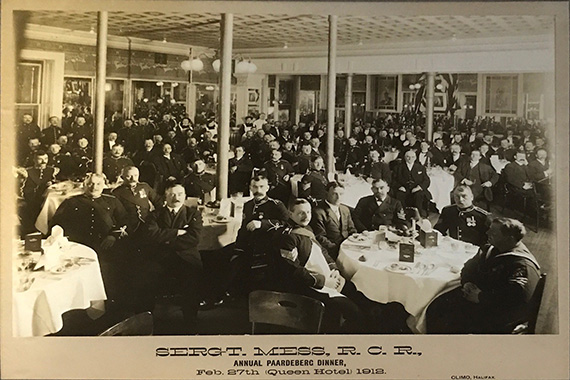
Paardeberg Day (1912)
World War I affected many Canadian families. Over 650,000 Canadians fought in the war and over 238,000 were hurt or killed. After the war, Canadians wanted to remember family members and friends who served overseas. During the 1920s, families observed Armistice Day on a Monday in early November. Veterans and their families usually gathered privately around memorials or soldiers’ graves and paid their respects to those who died fighting in the war.
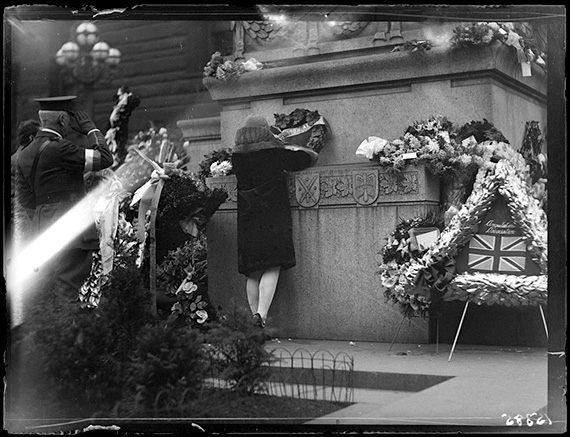
A woman laying a wreath on Armistice Day in Toronto (1928).
Public Remembrance Day ceremonies became more common in the 1930s. In 1931, Canada declared November 11 as Remembrance Day. After World War II, Remembrance Day became a day to remember those who served in World War I or World War II.
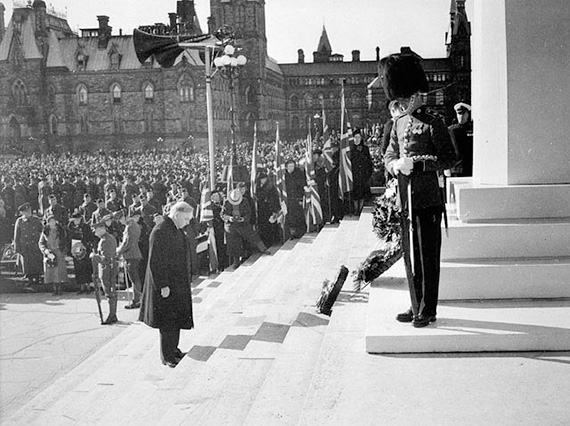
One of the first official Remembrance Days in Ottawa (1937).
Remembrance Day is now a day to honour both veterans and current members of the Canadian Armed Forces. Every year, on November 11, Canadians hold Remembrance Day ceremonies.
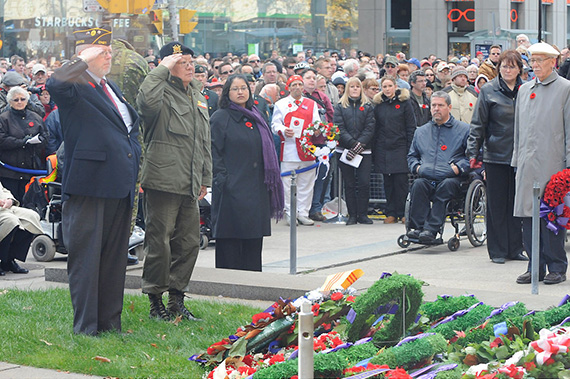
Participants in the City of Toronto’s Remembrance Day ceremony (2009).
Ceremonies and symbols
Ceremonies and symbols are an important part of observing Remembrance Day today.
Let’s explore some examples of Remembrance Day ceremonies and symbols.
Did you know?
Not all countries use the poppy for Remembrance Day and other flowers are used to honour soldiers. In France, le bleuet (also known as the cornflower) is used. In Newfoundland and Labrador, which was not yet a Canadian province during World War I, citizens traditionally wear the forget-me-not flower on Memorial Day (July 1) to remember World War I veterans.
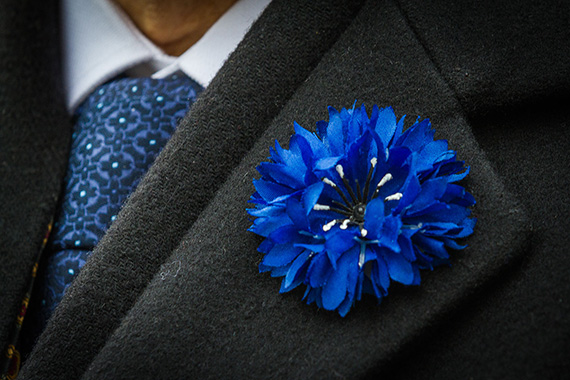
Le bleuet de France (also known as the cornflower).
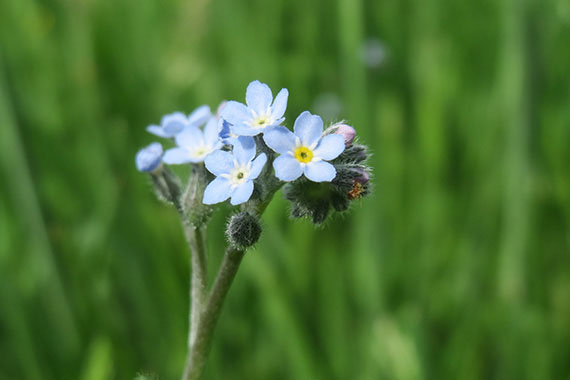
Forget-me-not flowers
Snapshot of a soldier: Harri Singh
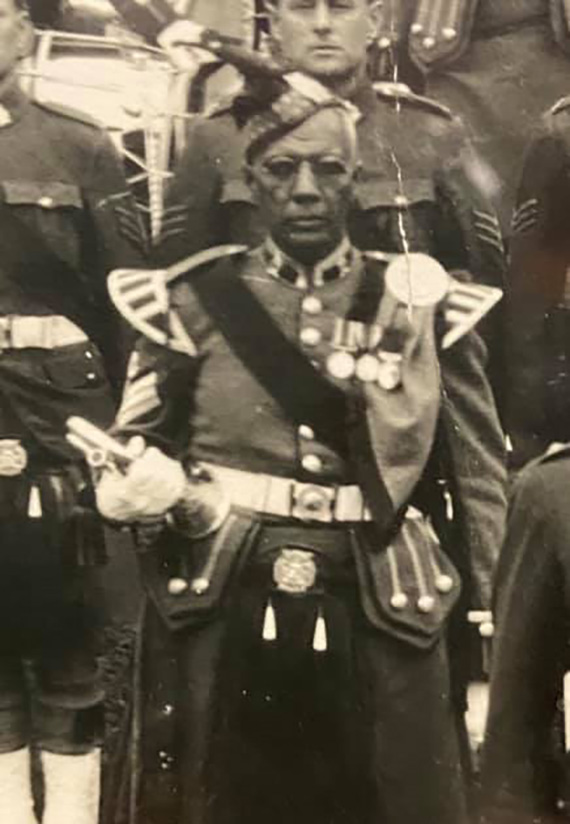
Harri Singh
Harri Singh was born in Amritsar, India in 1882. In 1916, he joined the Canadian Army and fought in Europe during World War I. Although he was injured, Harri survived the war, but many of the people in his group did not. When he returned, he was a building caretaker and continued to be an active member of the Toronto Scottish Regiment. As a Bugle Corporal, Singh took part in military ceremonies in Toronto to honour them. In 1926, he played his bugle at a special peace tribute on Remembrance Day to honour soldiers who did not come home.
You may choose to discover more about the bugle being played on Remembrance Day.
Discover more
Check out the following video to explore an example of the bugle being played at a Remembrance Day ceremony in 2020.
Characteristics of bravery
Let’s now explore some characteristics of bravery that are honoured on Remembrance Day.
Examples are:
- courage: responding in the face of fear
- resilience: adapting to hard situations and recovering from problems
- leadership: inspiring others to do their best and taking charge of important decisions
- integrity: standing up for what is right
- compassion: helping people who are struggling and putting the needs of others over your own
Try it
Let’s try matching characteristics of bravery to different situations.
In the following activity, for each characteristic of bravery, select the matching situation.
Honouring bravery
Being brave is never an easy thing to do. Members of the Canadian Armed Forces do their jobs in very difficult situations, like in times of war and natural disasters. It takes a lot of bravery to put your life in danger, but members of the Canadian Armed Forces do so to protect other Canadians and people around the world.
Did you know?
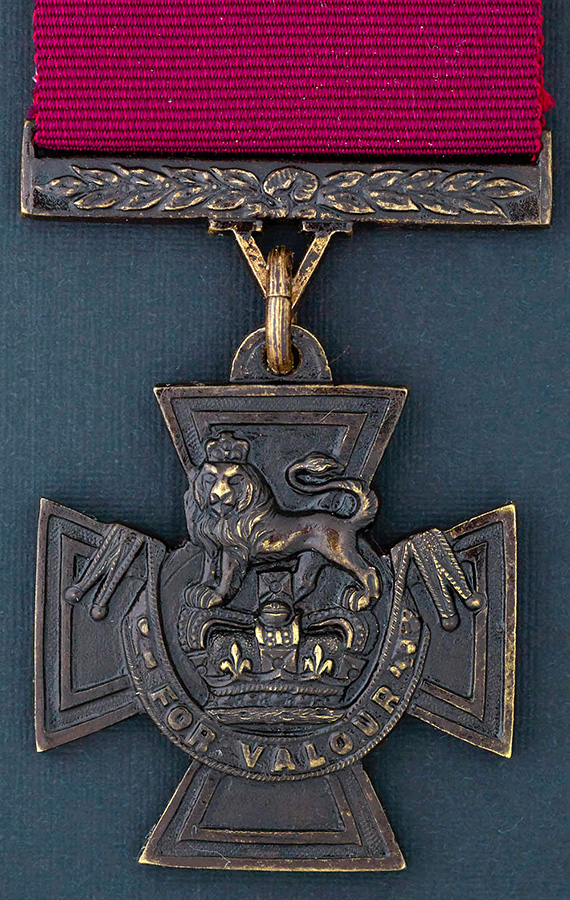
The Victoria Cross is the highest award for bravery in the Canadian Honours System and is awarded for bravery in the presence of the enemy. In 1856, Queen Victoria created the first Victoria Cross to recognize soldiers’ bravery in the Crimean War. In total, only 99 Canadians have received the Victoria Cross, and none have been awarded since 1945. In 1993, the Canadian government created a Canadian version of the Victoria Cross, which was first officially produced in 2008.
Press the following tabs to learn about veterans who have been honoured for different characteristics of bravery.
Courage
Stephen Thomas was born in Scarborough, Ontario. In 2000, he joined the 7th Toronto Regiment, Royal Canadian Artillery. In 2003, he went on his first tour of Afghanistan and in 2005, he joined the Queen’s Own Rifles. On October 3, 2006, during his second tour of Afghanistan, he was travelling in a convoy of vehicles in Kandahar. Suddenly, a vehicle in his convoy was attacked and caught on fire. The vehicle was full of highly explosive ammunition and important cargo. Risking his own life, he and three other soldiers quickly began unloading the ammunition and cargo. Soon after moving away, the fire engulfed the vehicle, causing an explosion. Thomas’ actions helped prevent a much larger disaster and saved the lives of many soldiers and civilians. For his brave actions, he was awarded the Medal of Bravery.
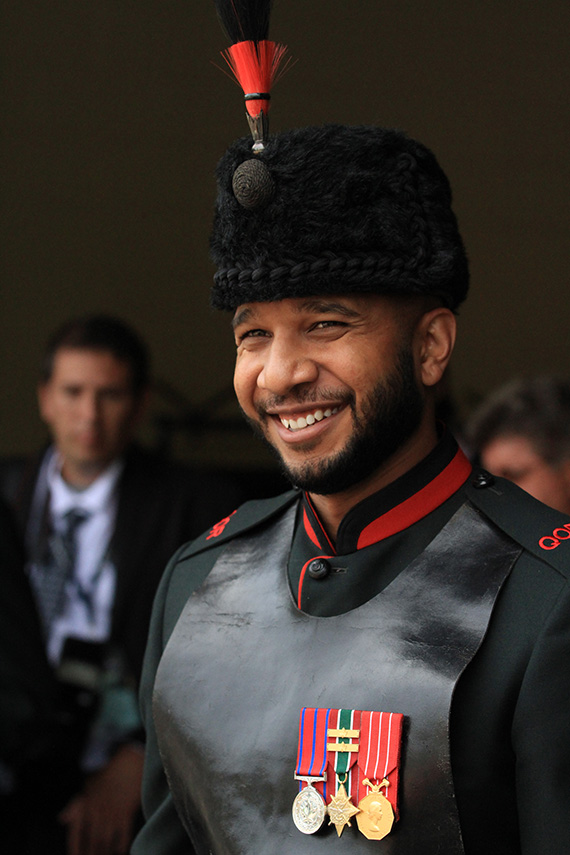
Stephen Thomas
Resilience
Robert and Tommy Wong were brothers in a family of 12 children. Born in Nanaimo, British Columbia, they moved to Vancouver before finally settling in Toronto.
Robert wanted to be a pilot from a very young age. At only 19, Robert flew his own plane that he and Tommy built together. When World War II started, Chinese Canadians were not allowed to join the Royal Canadian Air Force (RCAF). This did not stop them from serving their country.
While Robert was studying maintenance engineering at Parks Air College in Illinois, he was called back to Canada and missed his graduation ceremony. He served in the British Commonwealth Air Training Program as a civilian flight engineer and a test pilot for the RCAF. As the war went on, the rules around Chinese Canadian enlistment changed, and Tommy was able to become an air force pilot. After the war, the brothers opened a flying school in Toronto. It became the largest flying school in Canada, training over 8,000 pilots. Considered leaders in Canadian aviation, they helped set training and safety standards for pilots. In 2024, Robert and Tommy were inducted into Canada’s Aviation Hall of Fame.
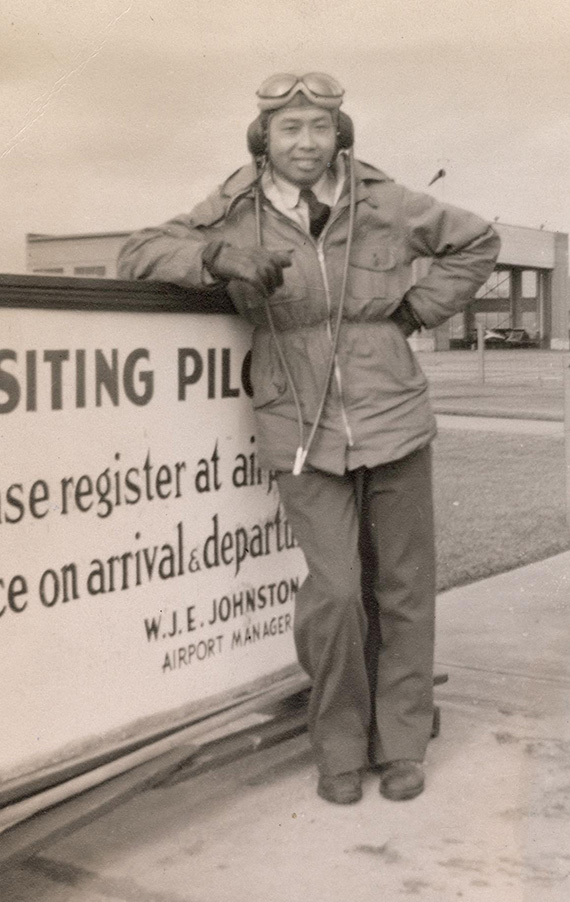
Robert Wong
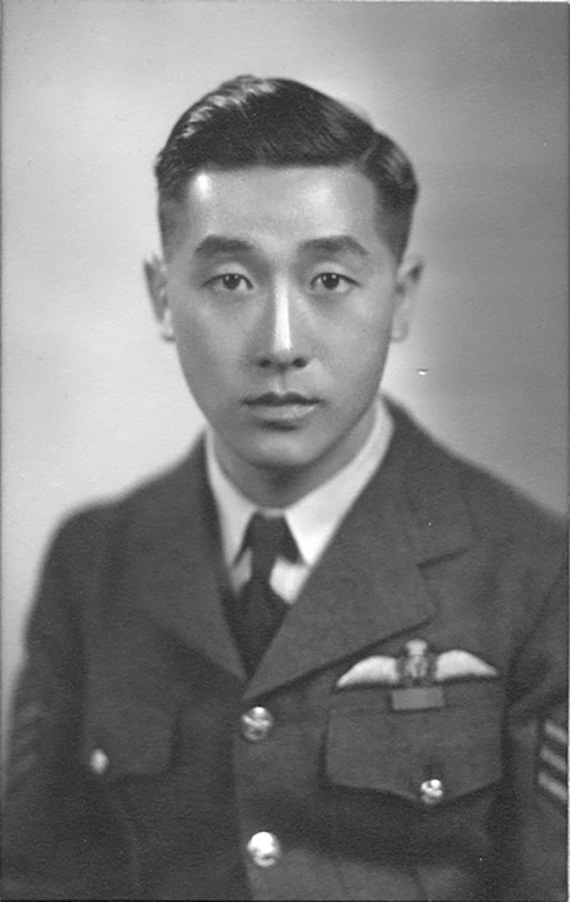
Tommy Wong
Leadership
Born in Wendake, Quebec, Lieutenant-General Jocelyn Paul is a member of the Huron-Wendat First Nation. He joined the army as a reservist in 1988 and transitioned to the regular army as a member of the Royal 22e Régiment in 1991. In 1993, he acted as platoon leader during a peacekeeping mission to Croatia. In 2011, he received the Meritorious Service Cross for his work as a battle group commander in Afghanistan. His award said: “His superb command of his unit ensured its success, advanced international efforts in Afghanistan, and brought great credit to Canada and to the Canadian Forces.” In 2022, he became the first Indigenous officer to become the Commander of the Canadian Army. Before retiring in 2024, he was the highest-ranking Indigenous member of the Canadian Armed Forces.
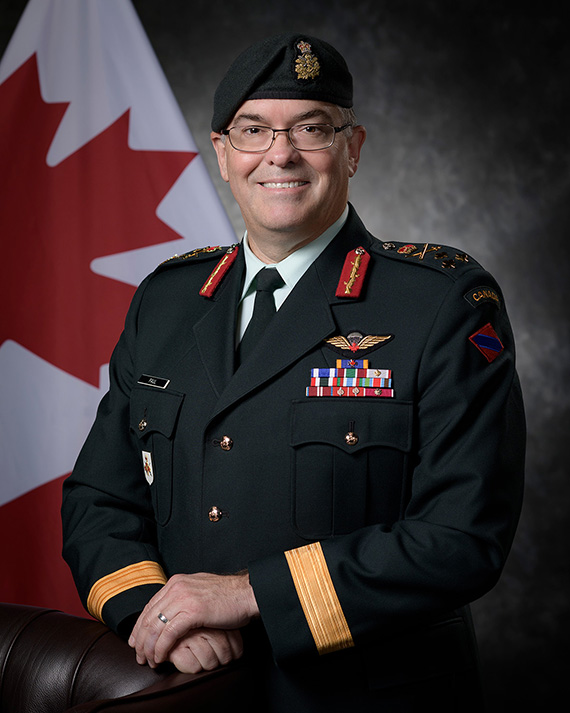
Jocelyn Paul
Integrity
Marguerite “Peggy” Downes was born in Dartmouth, Nova Scotia in 1939. After high school, she signed up as a driver in the Royal Canadian Army Service Corps in Halifax. In 1956, she moved to Toronto and joined the reserve forces. Through hard work and determination, she became a Major and one of the highest-ranking Black women in Canada. During her 45 years in the reserves, she held many positions, including Deputy Commander of the 709 Toronto Communications Regiment and the Administrative Officer with the Queen’s York Rangers Army Cadets.
She was an Honorary Aide-de-Camp for five of Ontario’s Lieutenant Governors and was the first Black woman to hold this position. In 1988, she received the Order of Military Merit and was involved with many community organizations, including the Voices of Joy choir. She believed in the importance of helping others and was a mentor to many individuals. A woman of strong beliefs, she believed that you should “try to do what you can, set your goals… and never have a defeatist attitude.”
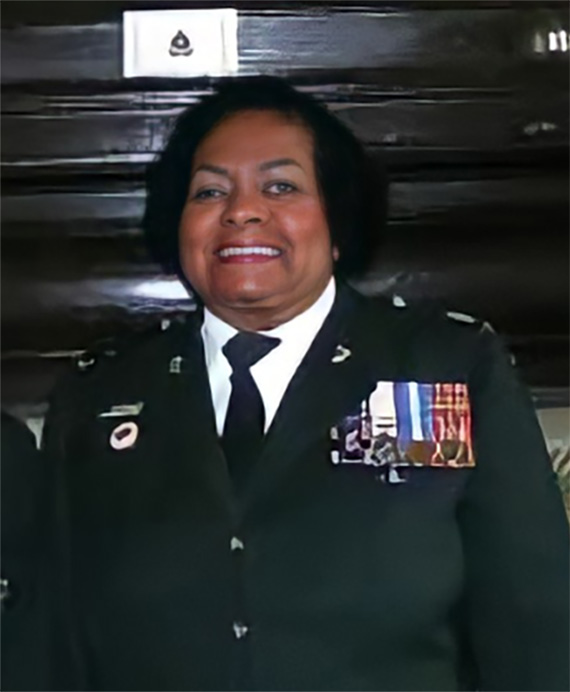
Marguerite “Peggy” Downes
Compassion
Jessie Chenevert (Urquhart) was born in Ottawa, Ontario, in 1922. After volunteering with the Red Cross, she trained as a nurse in Brockville. During the Korean War, her brother, Bob, went overseas. She became worried about Bob and wanted to keep an eye on him, so she signed up for the Royal Canadian Medical Corps.
Although she and her brother ended up serving at different times, she travelled to Asia in 1953 and became one of only 60 Canadian women to serve overseas during the Korean War. She served in Japan and Korea at the 25 Field Dressing Station caring for sick and hurt members of the Armed Forces. After the war, she stayed in the military and became the Director of Nursing at the National Defense Medical Centre.
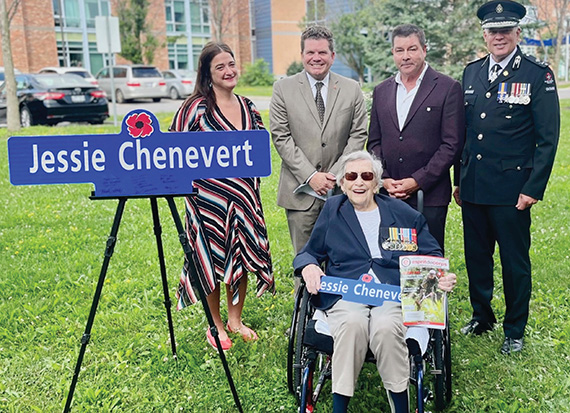
Jessie Chenevert being honoured at a street renaming ceremony in Ottawa.
Think and share
Are there any other characteristics of bravery that you think the veterans in the previous stories showed?
Discuss with a partner, if possible.
Indigenous veterans
How many status First Nations people bravely signed up for World War I?
Press Answer to find out.
Over 4,000 status First Nations people signed up for World War I. However, there were even more non-status Indigenous Peoples in Canada who signed up.
Check out the following video to learn more about brave Indigenous veterans.
In this learning activity, we explored:
- the importance of Remembrance Day
- the history of Remembrance Day
- stories of bravery in the Canadian Armed Forces
Try it
Try the following quiz to check your understanding of the learning activity.
Select the correct answer. Then, press Check Answer to see how you did.
You may choose to extend your skills by trying the following activity.
Discover more
In this learning activity, we learned about the poem “In Flanders Fields” by John McCrae.
Create your own poem about Remembrance Day. You may record your poem in a method of your choice. If you would like, you can use speech-to-text or audio recording tools to record your poem.
You may create your poem in acrostic, free verse, or other format of your choice.
Examples are:


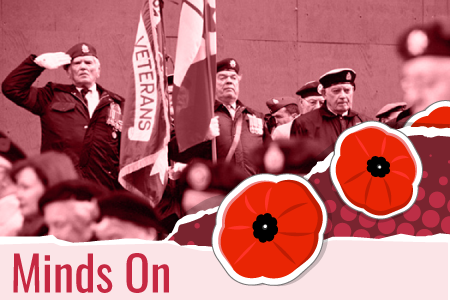
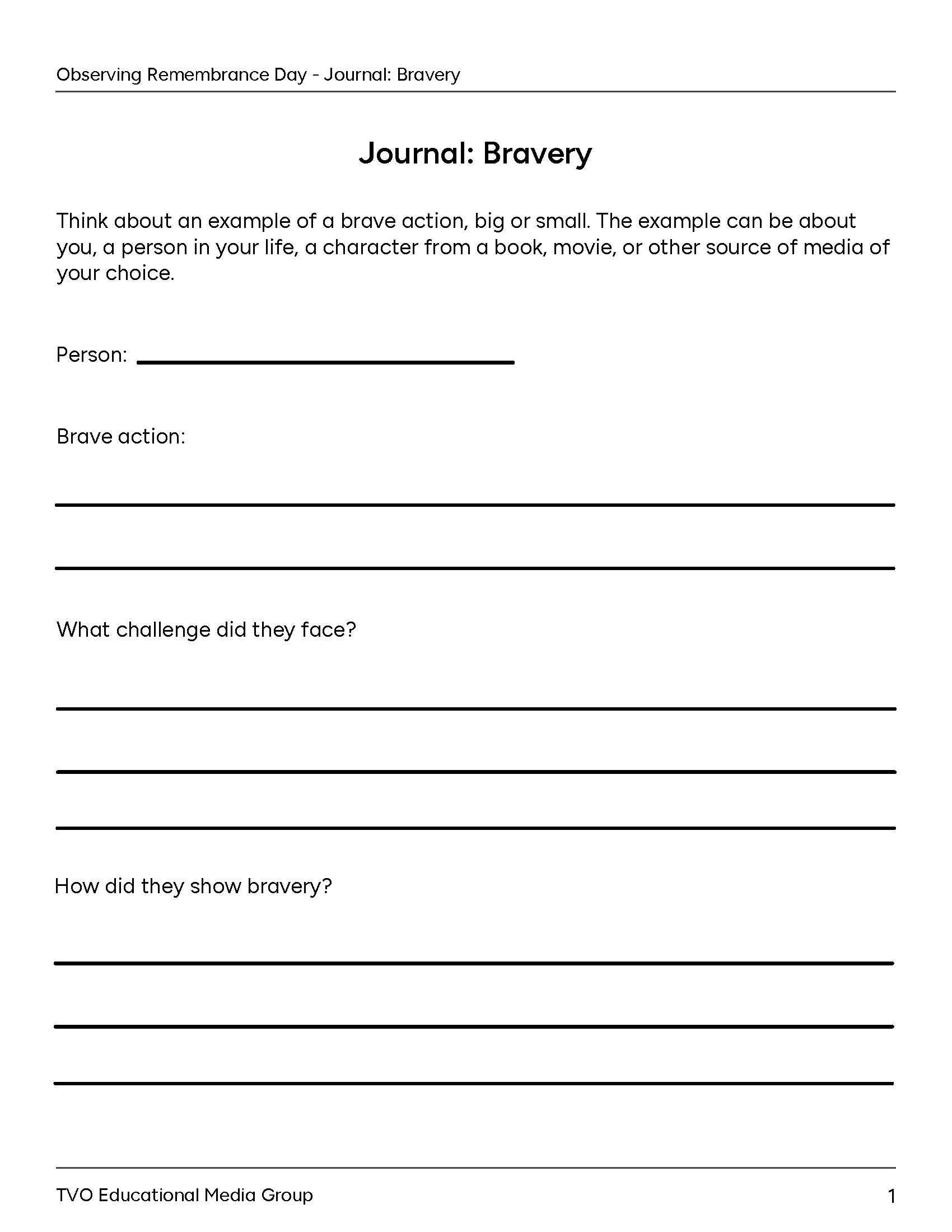 Press the ‘Activity’ button to access the
Journal: Bravery
Press the ‘Activity’ button to access the
Journal: Bravery

